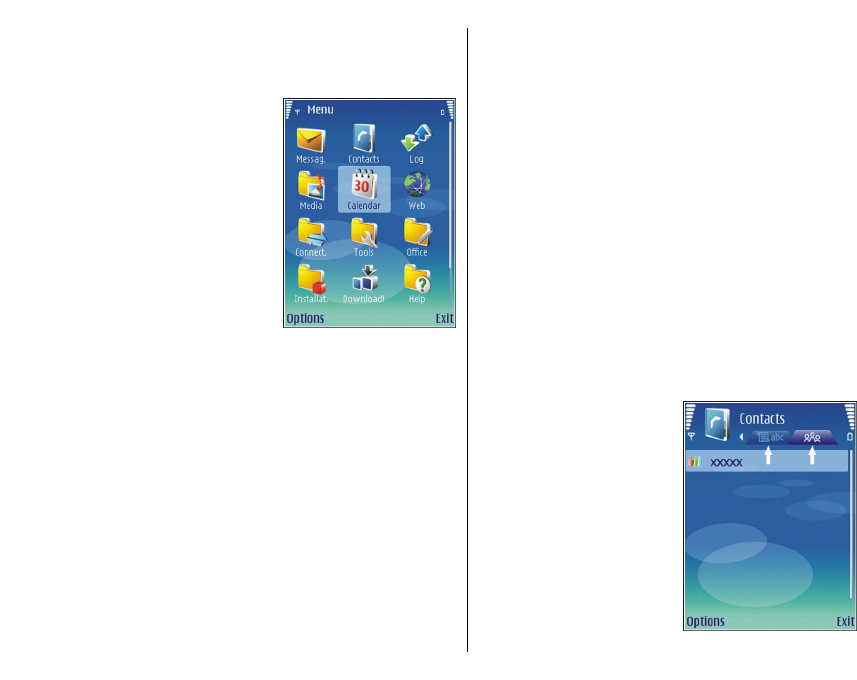
Menu
Select Menu.
The menu is a starting point
from which you can open all
applications in the device or
on a memory card.
The menu contains
applications and folders,
which are groups of similar
applications. All
applications you install in
the device yourself are by
default saved in the
Installations folder.
To open an application,
scroll to it, and press the
scroll key.
To view the applications in a list, select Options >
Change view > List view. To return to the grid view,
select Options > Change view > Grid view.
To make the application icons and folders animated,
select Options > Icon animation > On.
To view the memory consumption of different
applications and data stored on the device or memory
card and to check the amount of free memory, select
Options > Memory details.
To create a new folder, select Options > New
folder.
To rename a new folder, select Options > Rename.
To rearrange the folder, scroll to the application you
want to move, and select Options > Move. A check
mark is placed beside the application. Scroll to a new
location, and select OK.
To move an application to a different folder, scroll to
the application you want to move, and select
Options > Move to folder, the new folder, and OK.
To download applications from the web, select
Options > Download applications.
Common actions in
several applications
You can find the following actions in several
applications:
To change the profile, or switch off or lock the device,
press the power key briefly.
If an application consists of
several tabs (see figure),
open a tab by scrolling right
or left.
To save the settings that you
have configured in an
application, select Back.
To save a file, select
Options > Save. There are
different saving options
depending on the
application you use.
22
Your Nokia E51
